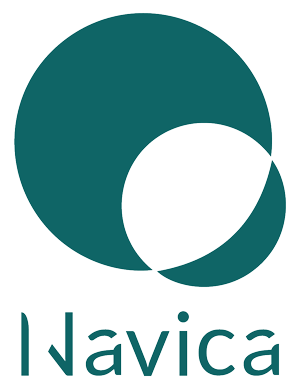Living with visual disabilities brings forth unique challenges that significantly impact daily life. However, the rapid advancements in technology have given rise to a myriad of innovative solutions aimed at enhancing accessibility and independence for individuals with visual impairments. In this article, we delve into the current landscape of assistive technologies, exploring their transformative impact, challenges, and the road ahead.
Understanding Visual Disabilities and Assistive Technologies:
Visual disabilities span a broad spectrum, from partial to complete blindness, creating barriers in education, employment, and social engagement. Assistive technology has made remarkable strides in bridging these gaps, empowering individuals with visual impairments to overcome challenges and lead more fulfilling lives.
Exploring Assistive Technologies for Visual Disabilities:
Screen Readers: These software applications convert digital text into synthesized speech or braille output, enabling visually impaired individuals to access and interact with computers, smartphones, and other devices by audibly reading out the content displayed on the screen.
Braille Displays: Tactile devices that convert digital text into braille characters, providing real-time access to digital content and enabling users to read and navigate through documents, web pages, and emails.
Magnification Software: Enlarges on-screen text and images, making them more readable for individuals with low vision. This technology allows users to adjust the size and contrast of content to suit their preferences.
Voice Assistants: Technologies such as Apple’s Siri, Amazon’s Alexa, and Google Assistant offer voice-activated control over devices and applications, assisting users by providing information, setting reminders, and performing tasks through voice commands.
Navigation Apps: Apps like BlindSquare and Soundscape use GPS technology to help individuals with visual impairments navigate their surroundings, providing auditory cues and directions in real time.
Accessible E-books and Audiobooks: Ensuring that visually impaired individuals can access literature and educational materials effortlessly by adhering to accessibility standards.
Object Recognition Apps: Utilizes a smartphone’s camera to identify and describe objects in the user’s environment, aiding in daily tasks like identifying products and reading labels.
The Transformative Impact:
The integration of these assistive technologies has transformed the lives of individuals with visual disabilities by fostering independence, communication, and engagement.
Access to Information: Breaking down information barriers, these technologies grant individuals access to a wealth of knowledge through digital resources, allowing them to engage with educational materials, online articles, and news updates independently.
Increased Communication: Facilitating seamless communication, these technologies enable individuals to connect with others through emails, social media, and messaging apps, fostering social relationships and reducing feelings of isolation.
Employment Opportunities: By enabling the effective use of computers and digital tools, assistive technologies open up a wider range of employment opportunities for individuals with visual disabilities, contributing to a more diverse workforce.
Navigational Autonomy: Navigation apps and tools provide individuals with the freedom to explore their surroundings confidently, enhancing mobility and allowing for greater participation in outdoor activities.
Civic Engagement: Empowering individuals to engage more actively in civic life, participating in online forums, accessing government websites, and even casting votes independently during elections.
Personal Empowerment: Access to digital content enables individuals to engage in personal interests, hobbies, and passions, enriching their lives with activities like reading books, pursuing artistic endeavors, or following sports.
Educational Advancement: In education, these technologies ensure that visually impaired students have equal access to learning materials and resources, enabling them to complete assignments, participate in online courses, and conduct research.
Financial Independence: By utilizing online banking, shopping platforms, and financial management apps, individuals with visual disabilities can manage their finances independently, contributing to their overall sense of self-sufficiency.
Healthcare Access: Assistive technologies enable access to healthcare information, appointment scheduling, and prescription management, allowing individuals to take control of their health and well-being.
Advocacy and Awareness: Individuals with visual disabilities can actively engage in advocacy efforts and raise awareness about accessibility challenges, fostering positive change in society.
Challenges and the Road Ahead:
While significant progress has been made, challenges persist in terms of affordability, awareness, technology integration, customization, user training, technological evolution, regulation, research and development, inclusive design, and advocacy.
Affordability and Accessibility: Ensuring that cutting-edge assistive technologies are affordable and available to individuals with limited financial resources.
Lack of Awareness: Addressing the lack of awareness among the general public and within the visually impaired community about the range of assistive technologies available.
Technology Integration: Complexities related to integrating new technologies into existing systems and infrastructure, requiring collaboration among different technology providers.
Customization and Personalization: Developing assistive technologies that can be easily customized to suit specific preferences and requirements.
User Training: Providing comprehensive training and support to users, especially those who might not be tech-savvy, to maximize the benefits of assistive technologies.
Technological Evolution: Ensuring that assistive technologies keep up with rapid technological changes while remaining compatible with older devices.
Regulation and Standards: Establishing consistent standards and regulations for assistive technologies to ensure their quality, safety, and interoperability.
Research and Development: Ongoing investment, collaboration, and a commitment to continually improve and innovate in the field of assistive technologies.
Inclusive Design: Designing products with universal accessibility in mind, considering factors such as user interfaces, compatibility, and user experiences.
Advocacy and Policy: Ongoing efforts to advocate for policies that promote the adoption of assistive technologies and ensure equal access to these tools.
While assistive technologies have significantly enhanced the lives of individuals with visual disabilities, addressing these challenges requires collaborative efforts. Technology developers, researchers, advocacy groups, and the visually impaired community must work together to create a future where assistive technologies are universally accessible, affordable, and seamlessly integrated into everyday life. As these technologies continue to evolve, barriers faced by individuals with visual impairments are gradually being dismantled, fostering inclusivity and accessibility in an increasingly digital world. The journey towards a more accessible and inclusive future continues, with the next installment set to explore assistive technologies for auditory disabilities.




